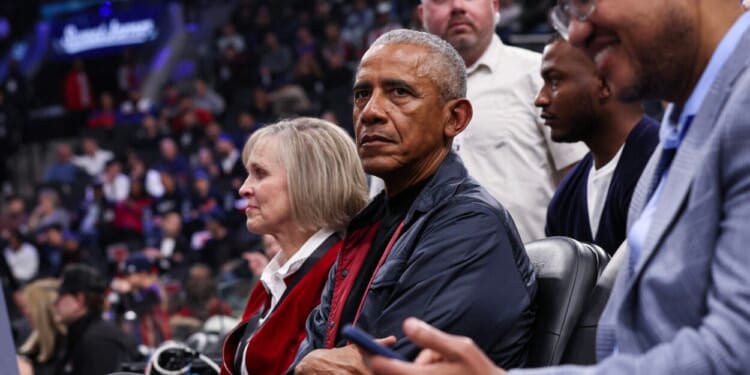The mayoral election in New York City is about to spark the strangest American political dynamic since the mid-19th century. Socialist Zohran Mamdani’s victory Tuesday has put the Democrats in the unenviable position of having to decide what their party is, and how it moves forward into the 2026 midterm election cycle.
By virtue of Mamdani’s election and campaign endorsements by high-profile Democrats, he is now the putative leader of his party. This gives Republicans the opportunity to demand that their opponents in every local, state and federal race explain whether they embrace or denounce Mamdani’s socialist ideology, which now defines Democratic Party. This situation is far more perilous for Democrats than the identity crises they faced after Richard Nixon’s defeat of Hubert Humphrey in the 1968 election and Nixon’s shellacking of George McGovern four years later. The party’s socialist ideological and policy schisms are growing deeper and wider, creating the same conundrum faced by the Whig Party in the years before the Civil War.
The Whigs emerged after Andrew Jackson won a decisive reelection in 1832, cobbling together a broad coalition of disparate constituencies to oppose, among other things, Jackson’s economic policies and perceived abuses of executive power. In choosing the name of their new party, Americans paid homage to England’s 17th century Whig Party, which wanted more power for Parliament and less for the monarchy. American Whigs even took a page from the playbook of their English cousins, opposing Jackson by branding him ‘King Andrew the First.’
American Whigs enjoyed success through the 1840s, electing two presidents and taking control of the House of Representatives in the 1846 midterm elections. But the party was deeply divided over slavery, with Northern and Southern Whigs at odds with each other over the issue. This fracture turned out to be an extinction level event for the Whig Party, which ultimately dissolved by 1854.
Just as the Whig Party collapsed over disagreements on chattel slavery, Democrats are facing similar divisions over a different kind of slavery, that of socialism. Whigs had to decide whether they would be a pro-slavery or anti-slavery party, and their irreconcilable differences led to the party’s demise. Democrats today must now decide whether they will be a pro-socialist or anti-socialist party. Given the growing discord over the party’s direction among ordinary voters, the donor class and liberal consultants, Democrats are primed for splitting into warring factions.
There are many socialists among the Democrat base right now; Gallup found last summer that 69% of Democrats identified as liberal or very liberal. They are militant, loud and quite well organized, as evidenced by the latest No Kings protests. The same Gallup poll found only 30% identifying as moderate or conservative. This smaller group also controls a lot of money, and their campaign contributions are substantial. But the Democrat donor class does not seem enamored of the rising socialism within their party. Not only are they withholding contributions to the Democratic National Committee, they don’t even want to fund events featuring Kamala Harris. Dissatisfaction over the 2024 election accounts for some of this stinginess but so does the ideological shift of the party.
Money is the mother’s milk of politics, but a larger question is how the socialist policies that fueled Mamdani’s win in New York City will play in the rest of the country. The political landscape in the Northeast and on the West Coast—states Democrats already win decisively—is pretty favorable. But success at the national level means growing beyond your base. Is socialism a winning issue in central and western Pennsylvania? Suburban Arizona and Georgia? Rural Wisconsin, Michigan and North Carolina? What about the 43% of Americans who consider themselves political independents? Elections are won by addition, not subtraction.
Concerns involving money and demographics are about to consume Democrat strategists as they fight over what sort of party they want to be. More to the point, their midterm election candidates must decide whether to explicitly reject socialism and risk the wrath of their very noisy left wing or climb aboard Mamdani’s socialist bandwagon and imperil their support from traditional Democrats and independents. It’s looking like a “heads I win, tails you lose” proposition.
It’s ironic that Democrats must now reckon with political wedges of their own design. Their advocacy of socialist economic policies and identity politics focused on gender and race is poised to split the party at every level. The Whig Party failed to manage the slavery issue 170 years ago and spiraled into oblivion. The same fate may await Democrats wrestling with the wedge of socialism.
We publish a variety of perspectives. Nothing written here is to be construed as representing the views of The Daily Signal.








